Creative Capital: How this former banker-teacher became a woodworker that handcrafts heirloom furniture
Alvan Koh is on a mission to build a community of Japanese woodcraft enthusiasts here in Singapore.
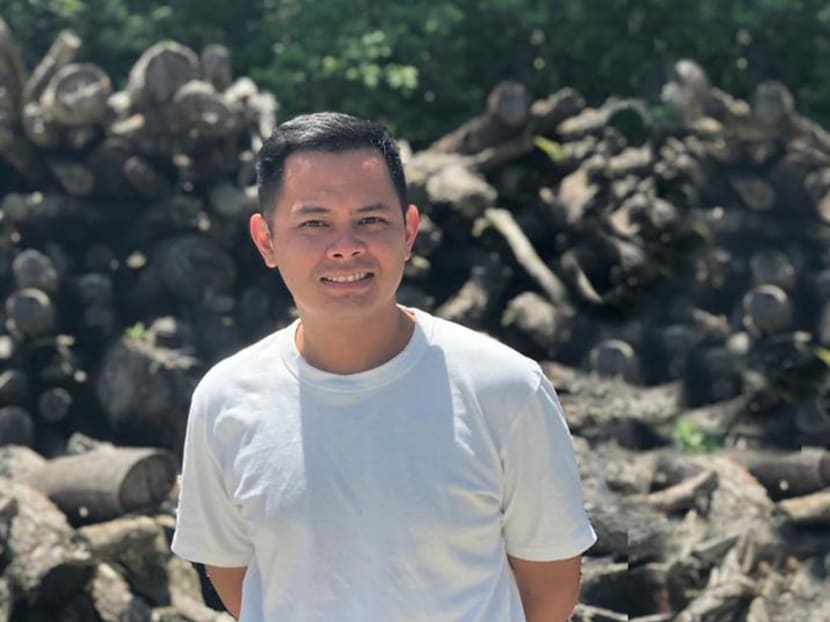
Singaporean Alvan Koh is a woodworker that handcrafts wooden furniture pieces and adheres to traditional Japanese woodcraft philosophies.(Photo: Alvan Koh)
Alvan Koh describes himself as a Jack of many trades. Over a decade in the corporate world, he’s been a business owner, a banker and a teacher. Today, he is a woodworker, handcrafting gorgeous wooden furniture pieces, who adheres to traditional Japanese woodcraft philosophies. That means all of his products have to be crafted by hand and held together by interlocking pieces in embrace. No nails and screws are ever used, even when building a table or a cupboard.
Alvan became enthralled with the Japanese philosophy of woodcrafting some two years ago. After trying to teach himself the craft, via YouTube videos, he finally decided he needed to go to Japan and pursue his passion properly. He travelled to Japan and tutored under a master temple carpenter. He set up Mokko Wood Studio upon his return to Singapore. His ambition is to not only craft heirloom furniture, but also to build a community of enthusiasts. To that end, he is also starting courses to introduce Japanese woodworking to a new generation of future artisans.
Alvan also doesn’t let his previous corporate experience go to waste. "Funnily enough, I am now a combination of all of my past professions," he said. "As entrepreneur who has to handle my own finances and a teacher training future woodworkers.”
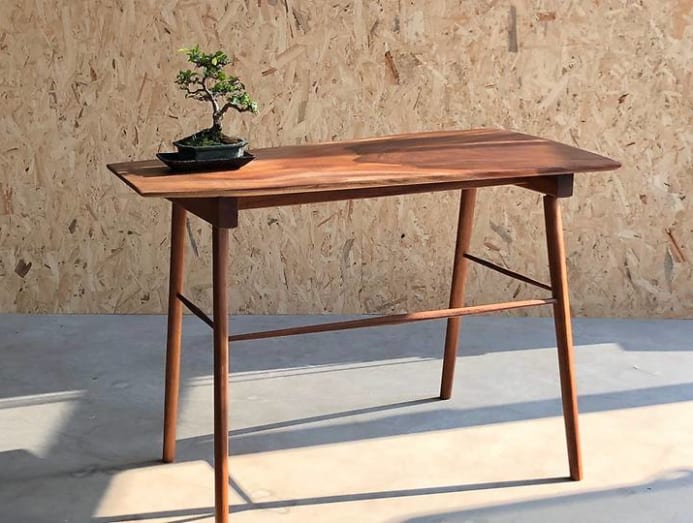
I had a chat with him for our latest Creative Capital feature, a CNA Lifestyle series on creatives making their mark in Singapore.
DO YOU CONSIDER YOURSELF AN ARTIST, A CRAFTSMAN OR AN ENTREPRENEUR, OR ALL OF THESE?
Let me begin by talking about craftsmen. Craftsmen are makers. The craftsman is given a set of drawings, a plan to follow and he is expected to deliver exactly that. Craftsmen give their 100 per cent to their craft, and no effort is spared to the dedication of the craft in the craftsman. A craftsman does not give 80 per cent, nor is he expected to deliver 120 per cent; just exactly 100 per cent Never allowed to fully express himself, the steps that he takes are not considered important as compared to the final product itself.
READ: The Singaporean mum who handcrafts the wonder of childhood
Artists, on the other hand are expected to push beyond themselves and even beyond other artists before them. As my Sensei says: “An effort of 120 per cent is continuously expected”. It’s not acceptable for an artist to work at 100 per cent and copy another artist’s work, as it would not be acceptable for a craftsman to provide his own design to the prescribed design.
I consider myself an artist first, where I have the freedom to decide how a final piece will be. Personality tests confirm that I'm somewhat of a non-conformist. I often visit the space where my finished product would be placed, just to feel the energy of the space. The next guide for me is the wood itself. Timber is never the same, and working with different pieces and studying the forms and the grains informs each work. I have been lucky enough that my designs are well-liked by my clients. I have not seen my work being re-sold in second hand markets so that tells me that I’m doing something right.
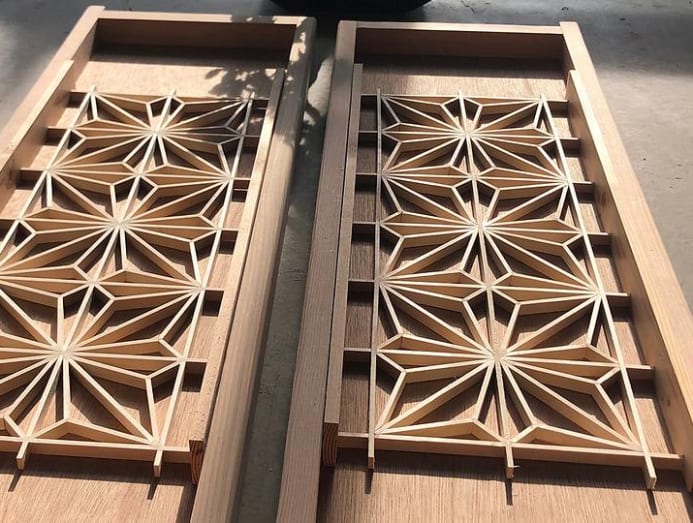
HOW DID YOU FIRST DISCOVER YOUR LOVE FOR WOOD WORKING?
I was always tinkering with objects from a young age! I loved taking things apart and then putting it back together, though not always to good effect. I think it’s in my nature to understand physically how things work and then the next step would be to build. I prefer wood because of its connection to nature.
It really started when I was looking for a new snooker cue. That got me interested in how cues were made. Then I found myself becoming more interested in how wood was selected. The interest then ballooned into various branches like carpentry tools, types of wood, carpentry techniques, etc. There was no turning back once I stumbled upon Japanese woodcraft.
WHAT IS IT ABOUT JAPANESE WOODCRAFT THAT REALLY INSPIRES YOU?
The Japanese have a deep respect for nature, it’s evident in their way of life. Japanese temple carpenters are most sensitive to these principles and have used them to build iconic temples that last for centuries.
For example, logs used for building columns need to withstand tremendous weight stress. These would be very carefully scrutinized for clues as to how the tree was positioned when it was rooted to the ground. Every log is inspected close up to determine how it is going to be used. They are able to recognize the orientation of the logs and which side of the log faced the south – which is the side that gets the most sun throughout the year.
They would then position the log the right way up and face it in the direction that it was facing when it was still part of a tree. Why? Because wood moves along with humidity changes throughout the year and positioning it in the same way that it was been positioned in nature makes the structure more stable.
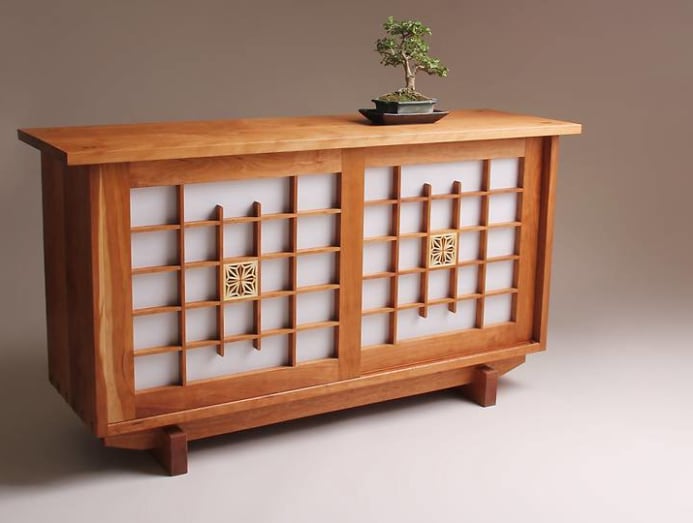
The other aspect would be in the magic of joinery. To build something is to join pieces of wood together. Japanese joinery is all about shaping wood into geometrical shapes that interlock with each other in a tight embrace.
Structures built this way are better equipped to deal with the stress of daily usage. They actually last longer than if they were built with screws and nails. How so? By employing the tensile strength of the wood and its inherent ability to bend and rebound to stress and shock. Pieces that are bound by nails might break because the nails hold on too tightly and might not allow for movement to be absorbed.
This is the reason why Japanese temples are built without the use of metal. Such methods of joining wood without nails or screws have existed for centuries.
HOW DID YOU START TRAINING? DID YOU ALREADY HAVE EXPERIENCE BEFORE TRAVELLING TO JAPAN LAST YEAR?
Because of the lack of learning opportunities in Singapore, I was mainly self-taught before I travelled to Japan. I spent two years learning from books and from videos on YouTube. I felt my technical skills had reached a plateau and I knew I had to travel to be able to get to the next level. Craftsmanship is a life-long learning journey and even after my formal training I am always open to learning more.
I looked overseas for learning opportunities and found Suikoushya International Craft School. It was great timing because they had just opened their doors to the international community and I was really happy to be its inaugural foreign student. My Sensei Takami Kawai and I both strongly feel that fate brought us together. Today, they are fully booked out a year in advance; it’s a real testament to the teaching ability of Sensei Takami.
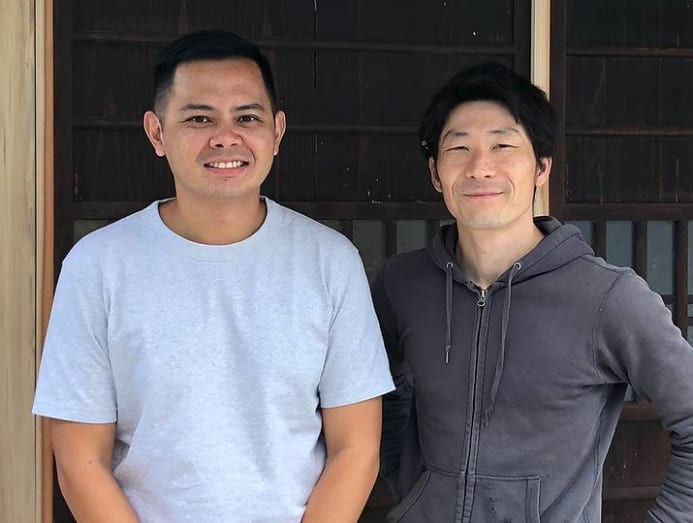
I’m also really excited to be able bring Suikoushya to Singapore in September this year. I’ll will be hosting Suikoushya founder Sensei Takami Kawai and his apprentice Dylan Iwakuni for two workshops here. The response so far has been great because enthusiasts can now experience and learn from the master sans the big time and financial investment.
TELL ME MORE ABOUT YOUR EXPERIENCE IN JAPAN? HOW LONG WAS IT? WHAT WAS EACH DAY LIKE?
It was absolutely fantastic for someone as hungry for knowledge as I was. The course ran for one month, but I wish I could have stayed ten times longer. Through a series of daily projects, Sensei Takami Kawai helped me to refine my technical skills. Each day lasted from 8am to 5pm, but I was so enthralled that Sensei had to limit my time there until 8pm every evening. There were also visits to various industry players like fellow craftsmen, sawmills and blacksmiths.
It was also a daily struggle being away from my wife, Pamella, and my sons, Ryan and Tyler. Pamella has been fantastic supporting my dream and endeavours - perhaps even braver than I was since she was the one in Singapore holding the fort and making sure that I was able to concentrate in Japan.

I mean, this was a husband who broke the bank to pursue his dream. He has emptied his bank account and dived head first into a newly opened school in a foreign country, with no security nor guarantee that he even paid for something legit. If you think he’s brave, think again about his wife!
HOW HAS THE BUSINESS BEEN GOING SO FAR? HAS IT BEEN A HARD TRANSITION FROM THE CORPORATE WORLD TO BEING A CREATIVE PROFESSIONAL?
I am blessed to be busy with client projects so far. Despite the waiting time of three to four months, clients put their faith in my work and I sometimes have to deal with the guilt of staying in the workshop longer than what my children wish. Transition from corporate world? To do what one loves is everybody’s dream so I can say the only thing I miss is having an air conditioned office!
IS SINGAPORE A TOUGH PLACE TO BE A CREATIVE?
I’ll speak from the perspective of a furniture artisan. There’s space for creativity here. The only limit is the artisan himself.
A lot of my clients give me free creative freedom to create – the only thing they specify are the functional dimensions of the piece.
HOW DO YOU FIND YOUR CUSTOMERS?
I have been lucky because most of them find me by referrals from clients and friends. I’d love to talk to furniture stockists to carry my pieces. If anyone is interested, please get in touch!
DO YOU HAVE ONE OF THOSE "WHAT IN THE WORLD AM I DOING?" MOMENTS?
Sometimes! As a designer I only start with a rough design in mind and it is pretty basic at best when I start a piece. The design flows as I proceed and sometimes midway through a project I get these moments. It’s pretty normal for me to sit for hours just staring at a piece, thinking about how to proceed. I think it’s akin to writer’s blocks. That’s when you realize you need to slow down and think or just go home and sleep on it.
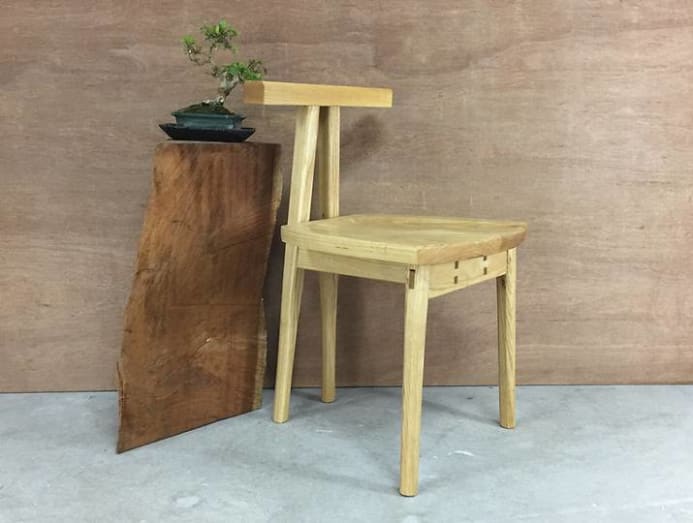
WHAT'S BEEN THE TOUGHEST CREATIVE CHALLENGE YOU'VE FACED SO FAR?
I can’t really pinpoint one since every piece has its own challenges. A memorable one would be when I was making a Windsor chair. Windsor chairs have been around for hundreds of years. They have a basic recognizable design which I started off with.
As the building progressed, I felt that it didn’t speak as much to me as I would have liked it to. It just didn’t feel right as it would have looked ordinary when complete. Sometimes ordinary is great but it has to feel special nevertheless. That’s the time when you have to dig in deep to figure out what can be done to better resonate with the piece. I took time off the project and explored various ideas until it struck me. I was reading about Japan’s new era Reiwa, which happens when there is an appointment of a new emperor. They had just come up with the name of a new era, and that gave me the inspiration and provided the impetus to carry on with the project.
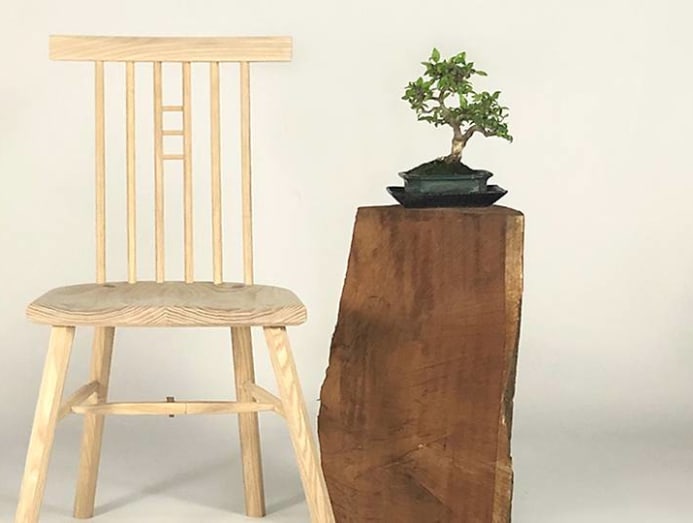
I went back to the chair and added a small detail to the central spindles, using 3 thin strips to break the visual monotony of the spindles. This also gave the impression of the word "日" which signifies both the origin of the idea being from "日本" Japan as well as the origin of myself as an artist. A signature Japanese "Shiribasami Tsugi" joint was also added to the bottom stretcher below the seat as an added Japanese detail. I’m really pleased with how it all came together in the end. The chair is named Reiwa.
ARE YOU THE ONLY ONE IN SINGAPORE DOING WHAT YOU ARE DOING?
I’ve had the honour to meet others here who are as passionate and inspired as I am by the Japanese way of woodcrafting. We are a small community here but I’m proud to say that since Suikoushya’s inception in 2018, Singapore has had the highest representation in its alumni. And we don’t have to be a small community because of the perceived difficulty. How difficult can sawing and hammering be? Humans have been doing this since we learnt how to make the first stone tools! Just takes patience to concentrate and the grit to carry it through. With a little guidance it is easy.
WHO IS YOUR OWN DESIGN OR CREATIVE HERO?
I count the late George Nakashima as someone who was so forward in going back to nature to look for inspiration. There are also many Japanese craftsmen who I follow on Instagram who inspire me on a daily basis. I have an amazing true story about a particular Japanese designer-craftsman who has inspired me.
READ: The Singaporean bespoke shoemaker who dreams of stepping onto the world stage
During my time in Japan, I travelled inter-state from Kyoto to Kobe to visit the Takenaka Carpentry Museum. This museum is considered to be the best in Japan for its exhibits and research into the history of Japanese carpentry tools. I had almost finished walking and studying the tool exhibits after spending a few hours there, and at the last section there was a workshop space where one could experience using the tools.
I stepped inside, and instead of the tools catching my eyes, I was drawn to a nondescript corner of the room where a craftsman was sharpening his tool. There was something peculiar in the way he was sharpening his tool that I had not seen before. Feeling curious, I walked past the experiential tools section right next to him and asked politely for his permission to let me observe the way he was sharpening. Without saying a word, he nodded his head in agreement.
It was both fresh and fascinating at the same time to watch the way he was doing it. After making many mental notes through the observation, I thanked him and proceeded on my way. Again, without saying a word he politely nodded his head as to acknowledge my gratitude. For a long time, he would remain in my mind as the nameless craftsman-who-sharpened-his-tool-differently.
READ: The Singapore ad man who quit his job to play with leather at 51
Fast forward one year later, I was inspired by a designer chair that I saw. Designer-carpenter Masahiro Goto had just concluded a chair making workshop in Israel and had posted pictures of the chair on social media. It gave me the inspiration to build my first chair. After it was built, I muttered enough courage to send pictures of my chair to Goto-San to thank him for the inspiration. I had no idea how he would respond to a random Singaporean stranger who adapted his design but something within me strongly encouraged me to send him the photos.
Goto-San replied to thank me for my gratitude and expressed his honour of inspiring my build. To my surprise, he added that we had in fact met before - at the Takenaka Carpentry Museum! I had never expected that the nameless craftsman-who-sharpened-his-tool-differently would turn out to be Goto-San who would inspire me one year later. We had never spoken the time we met but I guess I had somewhat made an impression on him. I named the chair the Goto chair to honor the fate that brought two strangers together.
WHAT’S THE DREAM?
I often dream about being skilled enough to compete in Kezurokai in Japan. It is a competition of skill between carpenters to be able to plane the thinnest shaving. Competition winners often plane shavings of five microns thick. Just to put this in perspective, the thickness of a human hair is 17 microns at its thinnest. For now, this is something that I can only dream about!





